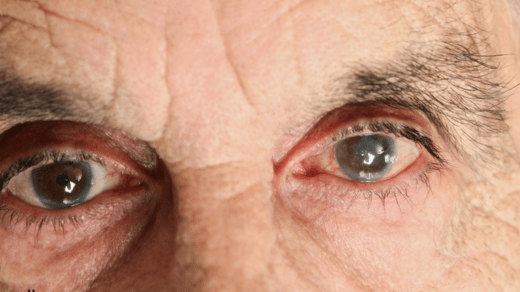When people think of glaucoma, many associate it with high eye pressure (intraocular pressure or IOP). However, the link between glaucoma and eye pain or pressure is more complex than it once seemed.
What is glaucoma?
Glaucoma is a condition that affects the eyes and can lead to vision loss or blindness by damaging the optic nerve at the back of the eye. The symptoms develop gradually, so you might not notice them right away. The only way to know if you have glaucoma is through a thorough eye examination that includes dilation.
While glaucoma cannot be completely cured, early treatment can help prevent further damage and protect your vision.
What are the two types of glaucoma?
Open-angle glaucoma:
This is the most common form of glaucoma. It develops slowly when the eye doesn’t drain fluid properly, similar to a clogged drain. As fluid builds up, it increases pressure in the eye, which begins to damage the optic nerve. This type of glaucoma is painless and doesn’t cause noticeable vision changes in the early vision.
Some people have optic nerves that are more sensitive to normal eye pressure, which increases their risk of developing glaucoma. Regular eye exams are crucial to detect early signs of damage to their optic nerve.
Closed-angle glaucoma:
This type of glaucoma occurs when the iris is too close to the eye’s drainage angle, sometimes blocking it, much like a piece of paper covering a sink drain. If the drainage angle becomes completely clogged, eye pressure can spike quickly, leading to an acute attack. This is a serious eye emergency, and you should contact your eye specialist immediately to prevent blindness.
What are the symptoms of glaucoma?
The symptoms of open-angle glaucoma:
In the early stages of open-angle glaucoma, there are no clear warning signs or symptoms. As the condition advances, blind spots begin to form in your side vision.
The symptoms of closed-angle glaucoma:
- Pain in the forehead or eyes
- Seeing halos or rainbows in vision
- Vomiting
- Headaches
- Nausea
- Blurred vision
- Reddening of the eyes
Reach out to the glaucoma eye hospital in Coimbatore to seek immediate help for glaucoma and protect your vision.
What is the relationship between eye pressure and glaucoma?
Research indicates high eye pressure raises your risk of developing glaucoma. Experts think that when eye pressure becomes too high, it can damage the optic nerve and lead to vision loss. Studies also show that reducing eye pressure can help prevent further vision loss from glaucoma. This is why managing your eye pressure and understanding the reason for eye pressure is so important .
Not everyone with high eye pressure will get glaucoma, and some people can develop glaucoma even with normal eye pressure. Whether or not you develop the condition depends on how much pressure your optic nerve can handle, which varies from person to person. For most people, eye pressure above 21 is considered higher than normal.
What happens if you have high eye pressure?
Eye pressure increases when the fluid can’t drain properly from the front of the eye. Between the cornea (the clear front layer) and iris (the colored part), there’s a space called the anterior chamber. Normally, fluid flows through this space and drains out through an opening where the cornea and iris meet. This opening contains spongy tissue called the trabecular meshwork, which helps the fluid drain from the eye.
What is considered as high pressure in the eyes?
First, we know that having eye pressure over 21 mmHg, is not very common in generally healthy individuals. Additionally, eye pressure usually rises with age because the drainage system becomes less effective.
Second, a healthy optic nerve can tolerate higher eye pressure than an unhealthy one. For instance, patients with optic nerves showing signs of damage usually require lower eye pressure to prevent further progression of glaucoma.
Third, it is occasionally necessary to determine the eye pressure that is “too high” for your optic nerve over time. For example, if you start using eye drops that lower your eye pressure by 20%, but your glaucoma still gets worse, your doctor might decide that even this lower pressure is still too high, and you may need to reduce it further.
What are the treatment options for glaucoma?
Doctors treat glaucoma using various methods, including medications (usually eye drops), laser therapy, and surgery. If you have glaucoma, starting treatment immediately is important. While treatment can’t reverse any vision loss, it can help prevent further damage.
Medicines:
The most widely used treatment for glaucoma is prescription eye drops. They help reduce eye pressure and protect your optic nerve from damage.
Laser treatment:
Doctors can use laser treatments to help drain fluid from your eye and reduce eye pressure.
Surgery:
If medications and laser treatments aren’t effective, your doctor may recommend surgery. There are various types of surgeries that can help drain fluid from your eye.
Important Takeaway:
Successfully treating glaucoma requires teamwork between you and your doctor. Your ophthalmologist will prescribe the treatment, but it’s up to you to follow their instructions and use your eye drops as directed. Once you start glaucoma medication, regular check-ups with the best eye doctor in Coimbatore are important. You will likely have visits every 3 to 6 months, though this can vary based on your treatment needs.

